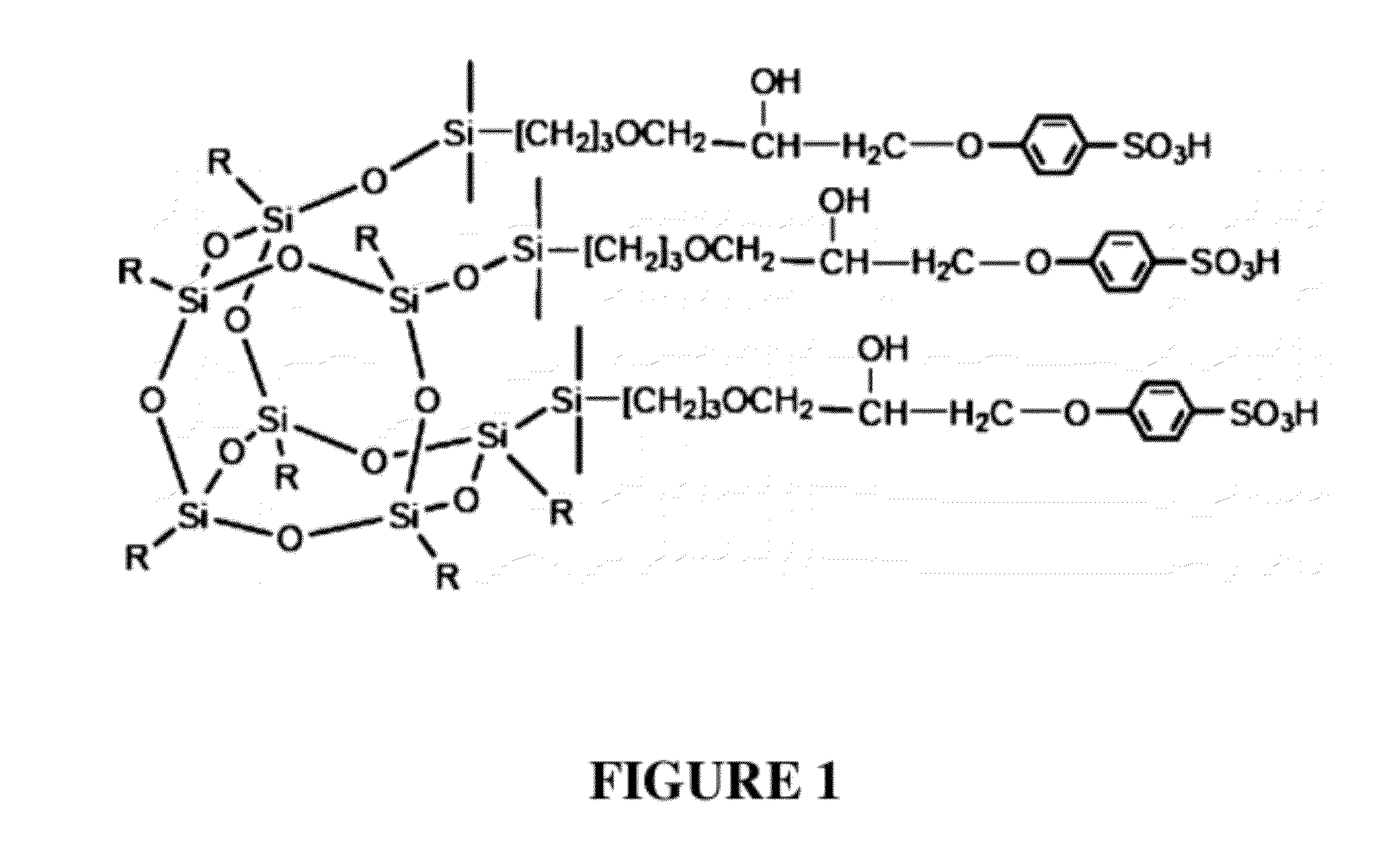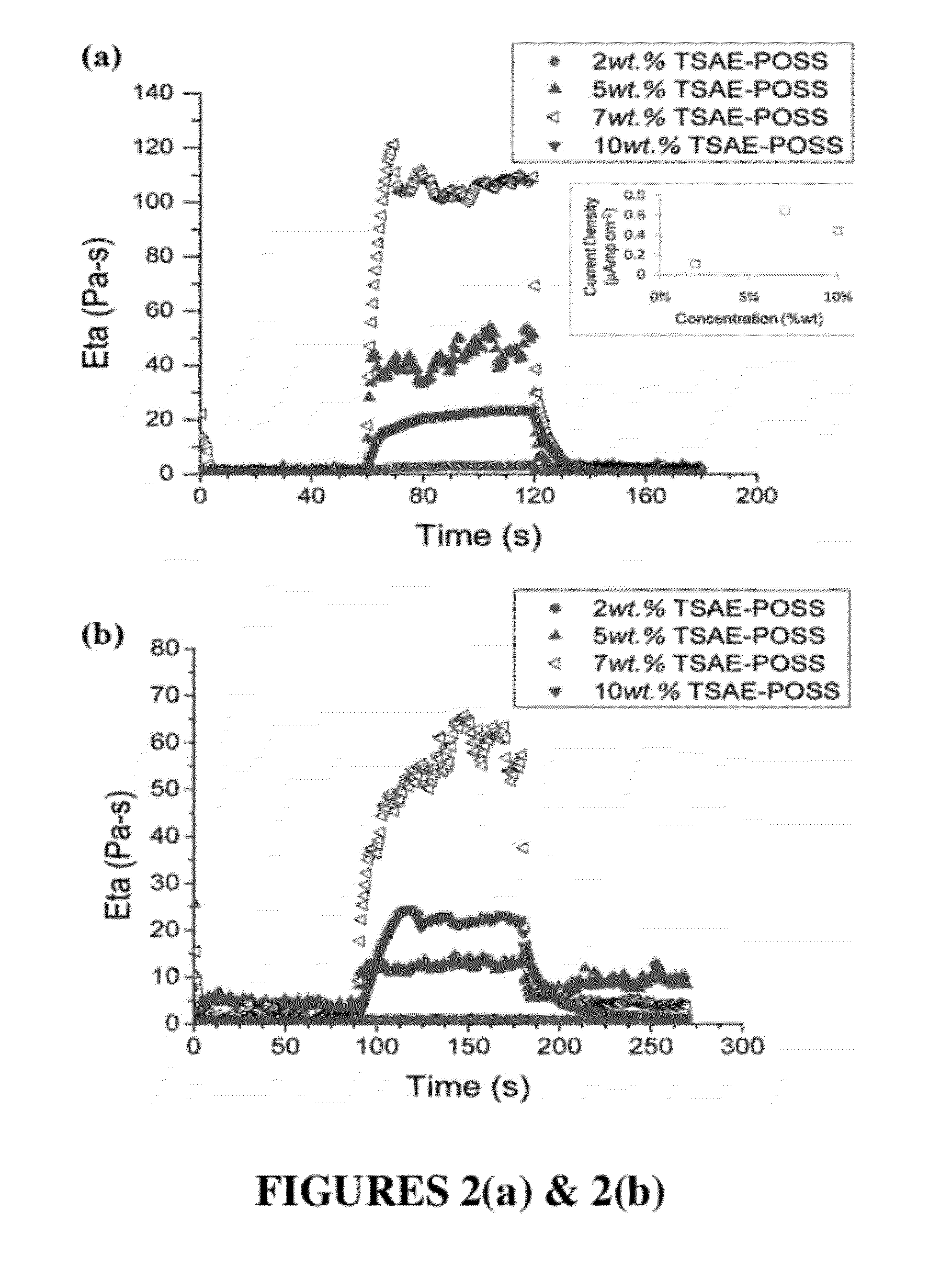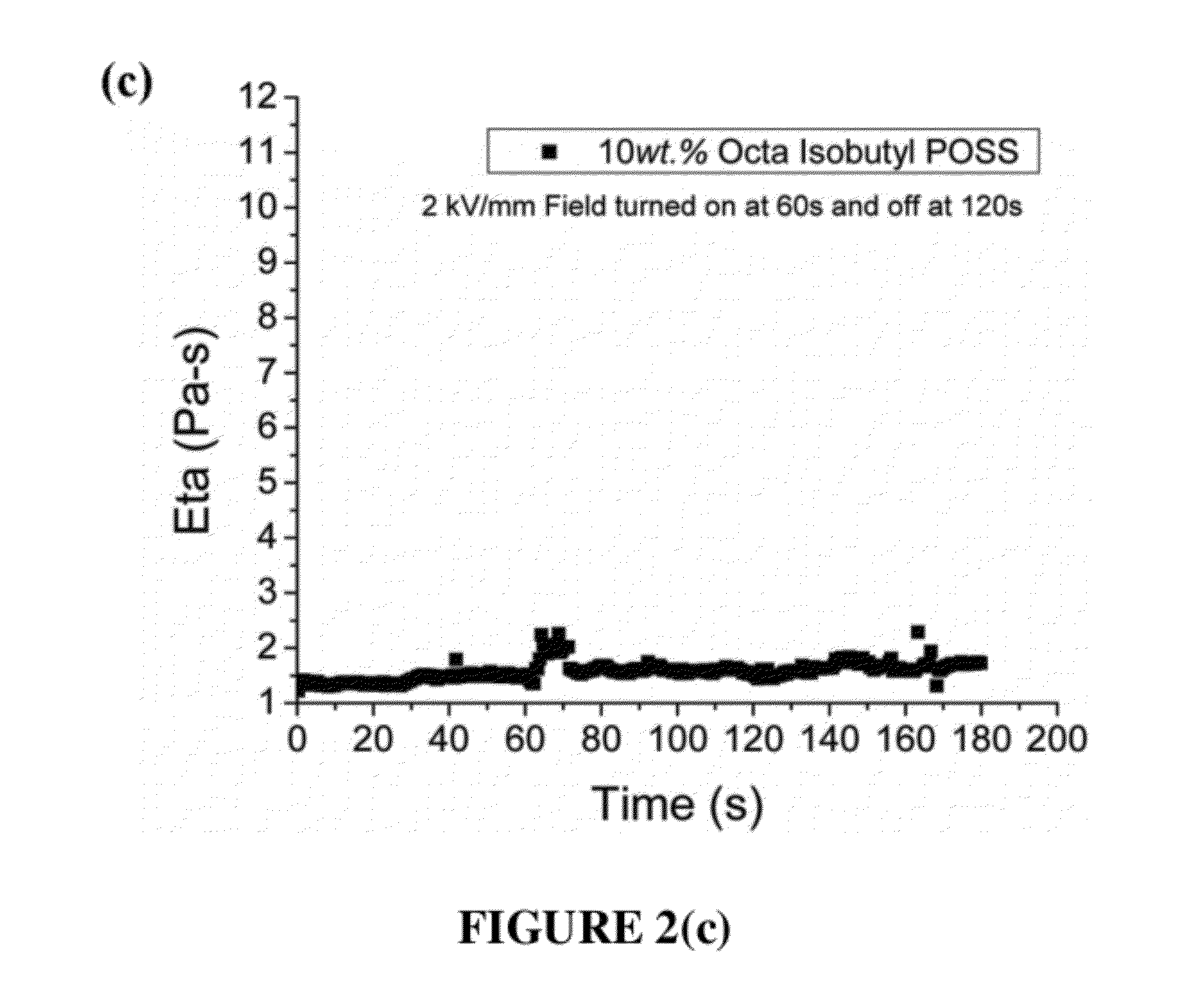Electrorheological fluids and methods
a technology of electrochemical fluids and fluids, applied in the direction of non-metal conductors, conductors, organic conductors, etc., can solve the problems of weaker effects, unacceptably large viscosity in absence of applied fields, and general failure of nanoparticle based systems to be promising, so as to improve the er effect
- Summary
- Abstract
- Description
- Claims
- Application Information
AI Technical Summary
Benefits of technology
Problems solved by technology
Method used
Image
Examples
example 1
Experimental
[0058]Rheological, dielectric, and conductivity measurements were performed on TSAE-POSS / silicone oil and octa-isobutyl POSS / silicone oil mixtures. The POSS molecules were purchased from Hybrid Plastics and the polydimethylsiloxane from Sigma-Aldrich. The POSS concentrations in the suspensions varied from 2-10 wt. %. The dielectric measurements for the suspensions were performed using a dielectric spectrometer (Novocontrol GmbH) in the frequency range between 1 Hz and 1.0 MHz and at temperature T=25° C. The rheological measurements were performed using the TA Instruments ARES Rheometer, attached to a high voltage generator. Prior to performing the measurements, all the samples were sheared at high shear rates in the absence of an electric field in order to ensure homogeneity. Step rate and shear rate tests were performed using parallel plate (50 mm diameter plates) geometries. In order to ensure consistency in the measurements, the shear rate sweeps were taken first at h...
example 2
Materials and Methods
Preparation of POSS Suspensions (ER Fluids)
[0066]The polyhedral silsesquioxanes; purchased from Hybrid Plastics, and used in our experiments were Tris sulfonic acid ethyl POSS (TSAE POSS) and tris sulfonic acid isobutyl POSS (TSAiB POSS). Tosyloxypropyl heptaisobutyl POSS (Tosyl POSS) was purchased from Sigma Aldrich. While Tosyl POSS was in powder form, TSAE POSS and TSAiB POSS were highly viscous liquids that formed particulate suspensions upon the addition of silicone oil. The densities of the POSS from the manufacturer ranged between 1.0-1.2 g cm−3. The dispersing oil, polydimethyl siloxane (PDMS) used was purchased from Sigma Aldrich and possesses a viscosity of 1 Pa·s. Prior to use the particles were dried at 80° C. under vacuum for three hours. This temperature was chosen because TSAE and TSAiB POSS were found to be thermally unstable at temperatures above 100° C., based on measurements with the TGA. PDMS was heated above 130° C. and placed over molecular...
example 3
REFERENCES FOR EXAMPLE 3
[0114]1. Halsey, T. C. Science 1992, 258, (5083), 761-766.[0115]2. Halsey, T. C.; Toor, W. Phys. Rev. Lett. 1990, 65, (22), 2820.[0116]3. Parthasarathy, M.; Klingenberg, D. J. Mater. Sci. Engin. R: 1995, 17, (2), 57-103.[0117]4. Wen, W.; Huang, X.; Yang, S.; Lu, K.; Sheng, P. Nat. Mater. 2003, 2, (11), 727-730.[0118]5. Cheng, Y.; Guo, J.; Liu, X.; Sun, A.; Xu, G.; Cui, P. J. Mater. Chem. 2011, 21, 5051-5056.[0119]6. Xu, L.; Tian, W. J.; Wu, X. F.; Cao, J. G.; Zhou, L. W.; Huang, J. P.; Gu, G. Q. J. Mater. Res. 2008, 23, 409-417.[0120]7. Deinega, Y. F.; Vinogradov, G. V. Rheol. Acta 1984, 23, (6), 636-651.[0121]8. Block, H.; Kelly, J. P. J. Phys. D: Appl. Phys. 1988, 21, (12), 1661.[0122]9. Orellana, C. S.; He, J.; Jaeger, H. M. Soft Matter 2011.[0123]10. Kim, Y. D.; Klingenberg, D. J. J. Colloid Interface Sci. 1996, 183, (2), 568-578.[0124]11. McIntyre, E. C.; Oh, H. J.; Green, P. F. ACS Appl. Mat. &Interfaces 2010, 2, (4), 965-968.[0125]12. Weiss, K. D.; Car...
PUM
 Login to View More
Login to View More Abstract
Description
Claims
Application Information
 Login to View More
Login to View More - R&D
- Intellectual Property
- Life Sciences
- Materials
- Tech Scout
- Unparalleled Data Quality
- Higher Quality Content
- 60% Fewer Hallucinations
Browse by: Latest US Patents, China's latest patents, Technical Efficacy Thesaurus, Application Domain, Technology Topic, Popular Technical Reports.
© 2025 PatSnap. All rights reserved.Legal|Privacy policy|Modern Slavery Act Transparency Statement|Sitemap|About US| Contact US: help@patsnap.com



